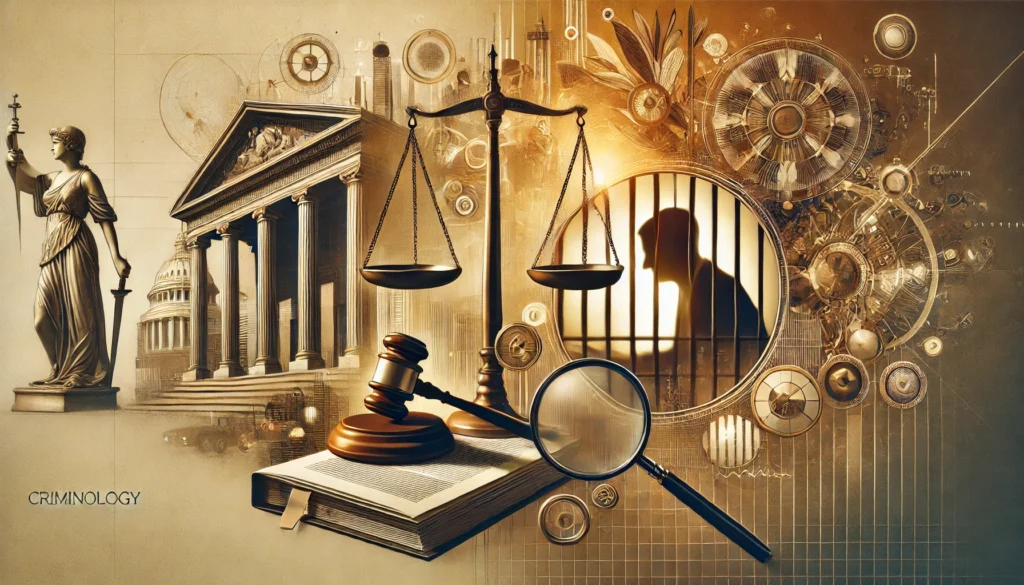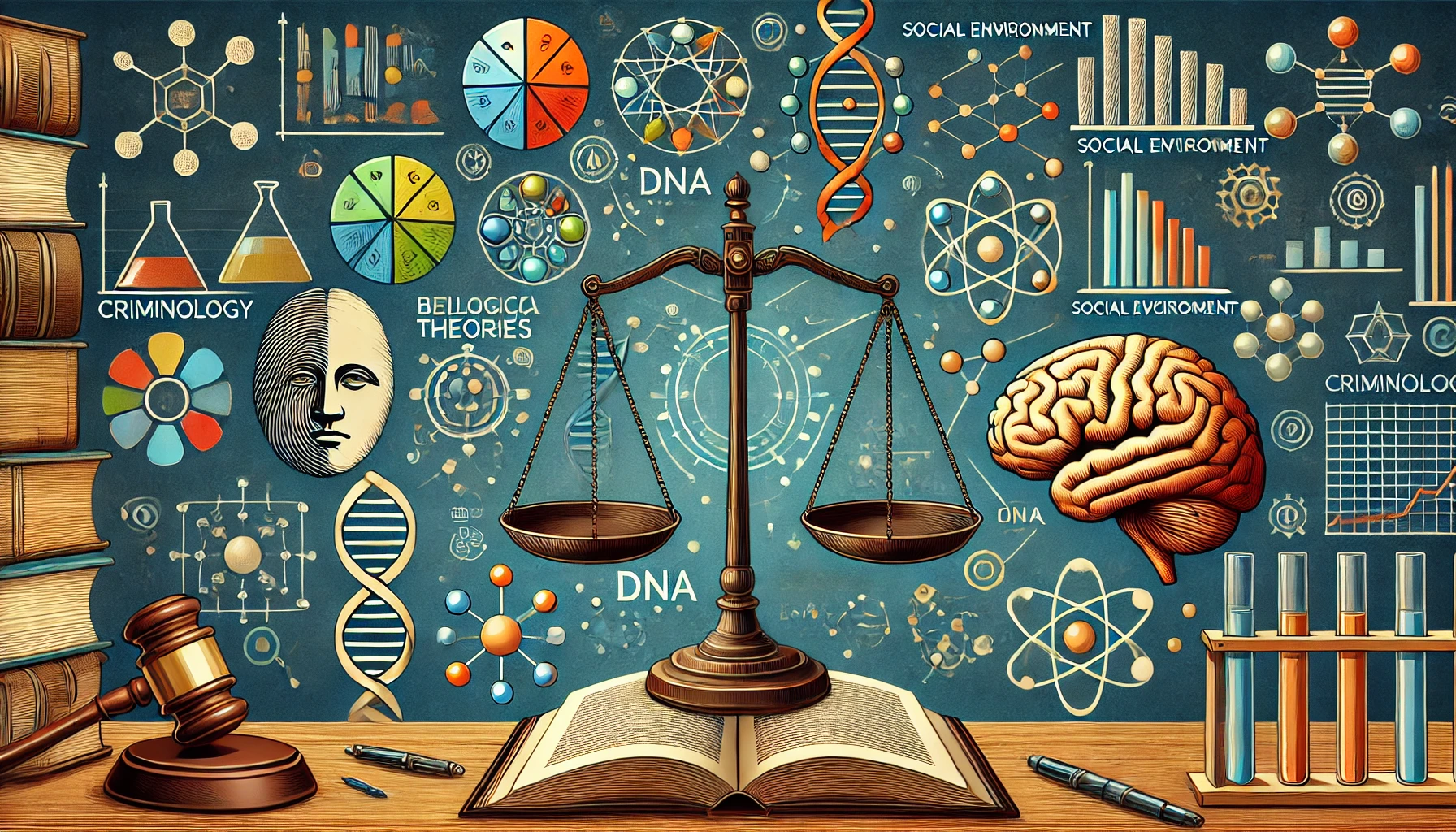Criminology is a multidisciplinary field aimed at understanding the causes of crime, its motives, and ways to prevent it. One of the most distinctive features of criminology is its diversity of intellectual schools. Each school represents a different theoretical framework for understanding crime, focusing on specific factors such as human nature, social environment, or psychological makeup.
This article provides a comprehensive analysis of criminology schools, starting from classical theories that focused on free will and rationality, to modern schools that adopted more complex scientific approaches to explain crime.
1. The Classical School
A) The Core Concept
The Classical School emerged in the 18th century as a response to societies suffering from arbitrary and unjust penal systems. This school focused on the idea that humans are rational beings who possess the free will to choose between good and evil.
B) Key Thinkers of the Classical School
- Cesare Beccaria:
Beccaria is considered one of the pioneers of the Classical School. In his work “On Crimes and Punishments,” he called for justice through proportional and just punishments. Beccaria argued that punishment should aim to deter crime rather than seek revenge and that it would be most effective if it was swift and predictable. - Jeremy Bentham:
Bentham, the founder of utilitarian theory, proposed that actions should be evaluated based on their ability to create the greatest happiness for the greatest number of people. He advocated for the design of penal systems that deterred crime with the least social cost.
C) Criticisms
While the Classical School had a significant impact on the development of criminal justice, it faced several criticisms:
- Neglect of social and psychological factors: The school overlooked the influence of the social environment and psychological factors on criminal behavior.
- Oversimplification of free will concepts: It assumed individuals had complete freedom in their decisions, ignoring environmental or cultural constraints.
2. The Positivist School
A) The Concept of the Positivist School
The Positivist School emerged in the late 19th century, influenced by advances in biological and social sciences. It argued that criminal behavior could be the result of genetic, biological, or environmental factors.
B) The Biological School
- Cesare Lombroso:
Lombroso is often regarded as a founder of the biological approach to criminology. He introduced the concept of the “born criminal,” suggesting that certain physical traits made individuals predisposed to commit crimes. Although Lombroso’s theories faced significant criticism, he laid the foundation for studying crime scientifically. - Enrico Ferri:
Ferri expanded the biological approach by emphasizing the interaction between biological, psychological, and social factors in understanding criminal behavior. He argued that crime was not the result of a single factor but a combination of various influences.
C) The Psychological School
This school focused on the psychological aspects of criminal behavior, particularly the influence of mental disorders and personality disorders such as psychopathy and behavioral disturbances.

3. The Social School
A) The Core Concept
The Social School emerged with the development of sociology in the early 20th century. It focused on how social and cultural environments influenced criminal behavior, arguing that crime is not just the result of individual actions but also social and environmental factors.
B) Key Theories of the Social School
- Social Disorganization Theory:
Developed by the Chicago School, this theory suggested that crime is prevalent in communities suffering from social disorganization and weak social bonds. It highlighted the role of poverty and disorganization in creating environments conducive to crime. - Differential Association Theory:
Proposed by Edwin Sutherland, this theory suggests that criminal behavior is learned through interaction with others who engage in criminal behavior. Social interactions, rather than innate traits, are seen as key in acquiring criminal behavior. - Strain Theory:
Developed by Robert Merton, this theory explains crime as a result of the contradiction between cultural goals and the means available to achieve them. For example, an individual facing economic restrictions might resort to theft to achieve material success.
4. Modern Criminology Schools
A) The Integrative School
The Integrative School combines biological, psychological, and social factors to explain crime. It aims to provide a comprehensive understanding of crime by considering the interaction between the individual and their environment.
B) The Critical School
The Critical School focuses on understanding crime from a social and political perspective. It views crime as often resulting from social injustice or oppression. Examples include economic crimes and corruption in capitalist systems.
C) The Electronic School
With the rise of technology, the Electronic School emerged to study crimes associated with the internet, such as cyber fraud and hacking. It emphasizes the impact of technology on criminal behavior.
Conclusion
Criminology schools offer different perspectives on understanding crime and its causes, reflecting the diversity and ongoing evolution of this field. From the Classical School, which emphasized individual responsibility, to modern schools that address crime from multiple angles, criminology has developed to meet the needs of contemporary society.
Today, this diversity in theoretical schools provides a foundation for a deeper understanding of crime and the development of more effective strategies to combat it. Students and researchers must delve into these schools to fully comprehend the multifaceted nature of this vital field.

